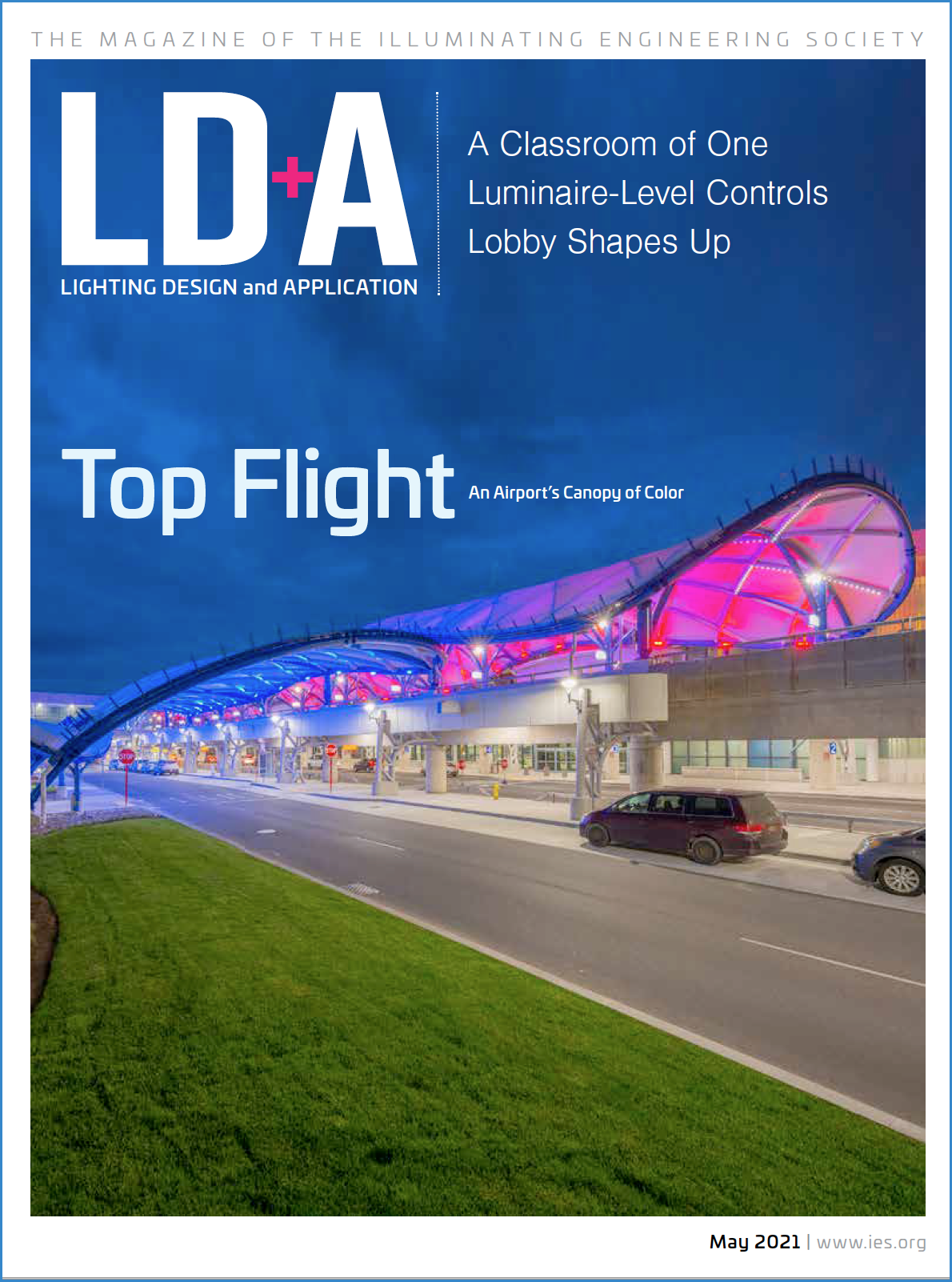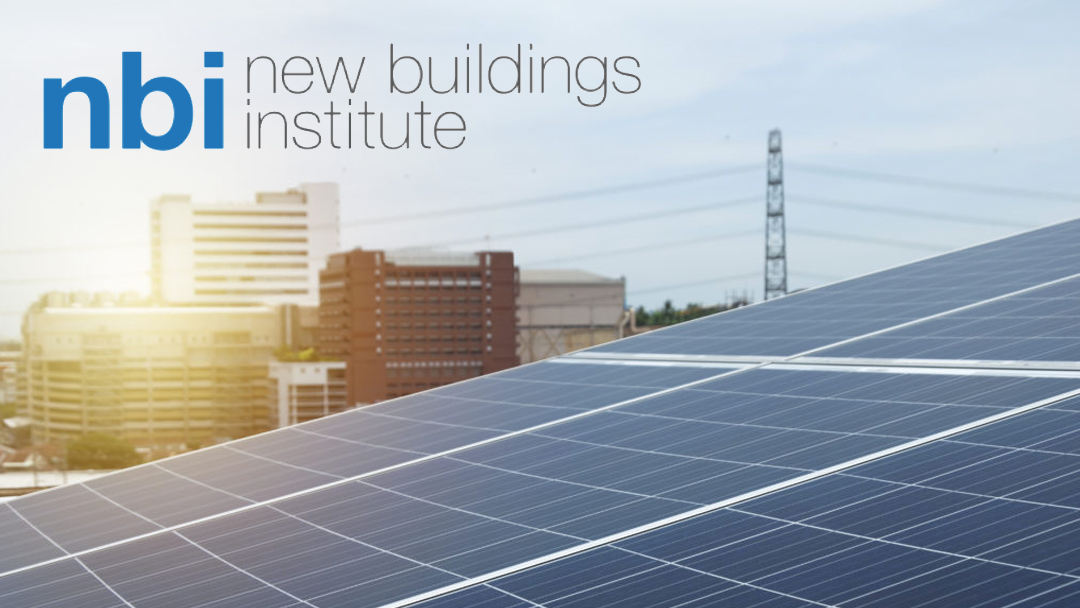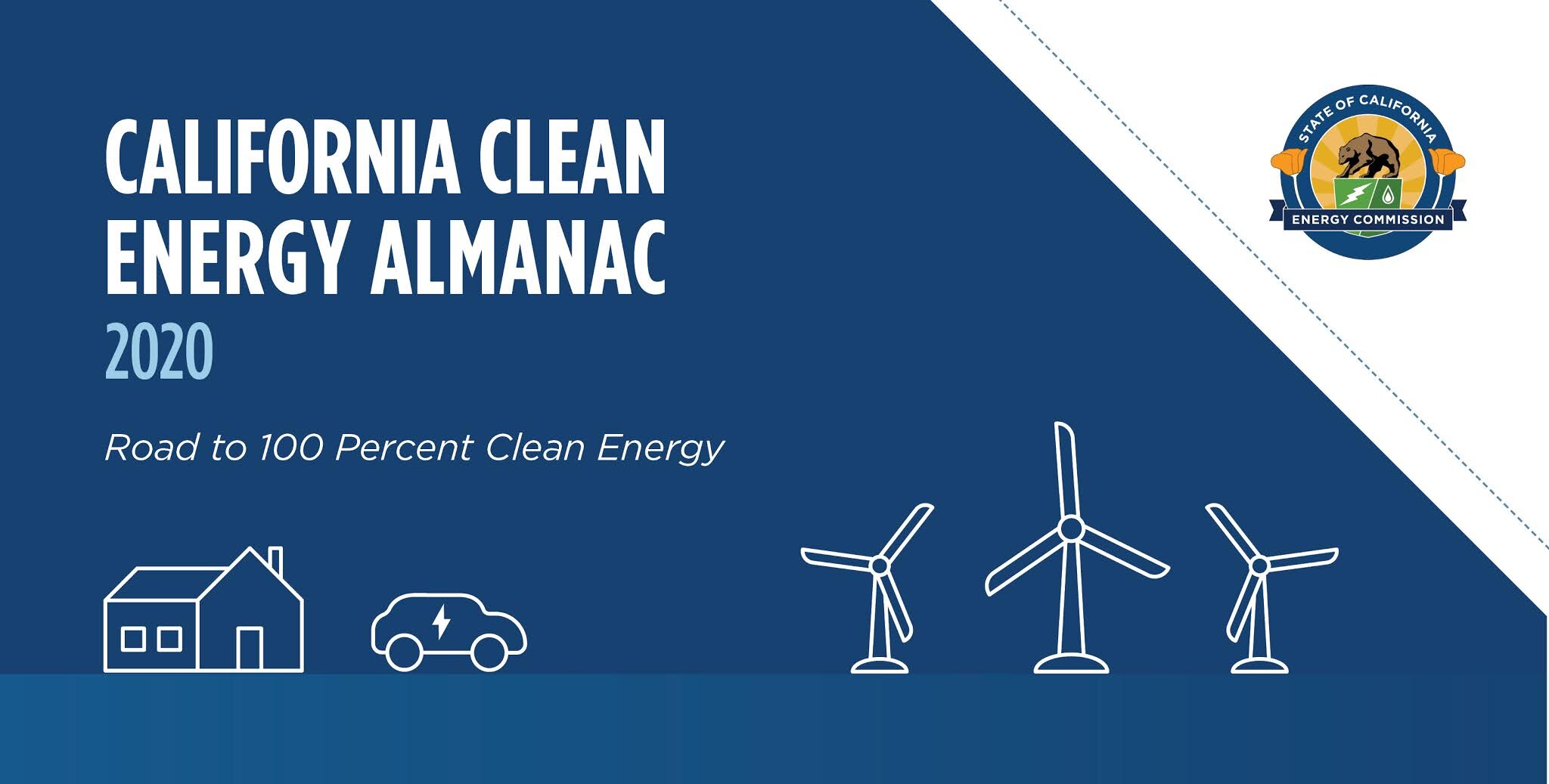Biden decarbonization focus shifts to buildings, with goal to triple efficiency, see up to $200B in savings
Photo by Science in HD on Unsplash
Utility Dive Brief:
The Biden administration said Monday it will invest $30 million into workforce initiatives designed to train people to construct and maintain high-performance buildings that utilize renewables, efficient lighting and energy demand management, among other clean energy technologies.
The U.S. Department of Energy also released a grid-interactive efficient buildings (GEB) "roadmap," which includes more than a dozen recommendations to integrate buildings with solar and wind power through demand management and storage. The agency estimates such buildings could create savings up to $200 billion through 2040.
The White House also announced new building performance standards for the federal government, spearheaded by the Council on Environmental Quality. The federal government is the single largest energy consumer in the U.S., and its more than 360,000 buildings represent almost 60% of its energy use, according to the Better Buildings Progress Report released alongside the new announcements.
Kelly Seeger and Cori Jackson Author Article on Outcome Based Code in LD+A
Outcome-based energy codes are relatively new. They incorporate strategies that quantify a building’s actual energy performance over time to demonstrate code compliance. The term “outcome-based” refers to the fact that compliance is linked with a building’s actual energy “outcome,” or energy use, which may be measured post-occupancy. CEA President and Board Chair Cori Jackson and Board Member Kelly Seeger address this timely topic in the May 2021 issue of LD+A, the magazine of CEA member Illuminating Engineering Society.
New Grid Optimal LEED Credit Encourages Designers to Help Solve Grid Issues
A new LEED pilot credit known as the GridOptimal Buildings Pilot Alternative Compliance Path (ACP), could empower designers, architects and engineers to lead this paradigm shift: a future in which grid-enabled buildings—those with renewable generation and/or controls that communicate with the grid—play a critical role in meeting 100% renewable electricity goals.
Biden-Harris Administration Creates ARPA-C
The Biden-Harris Administration is initiating an ambitious innovation effort to create American jobs while tackling the climate crisis, which includes the launch of a new research working group, an outline of the Administration’s innovation agenda, and a new $100 million funding opportunity from the U.S. Department of Energy to support transformational low-carbon energy technologies. The announcements kickstart the Administration’s undertaking to spur the creation of new jobs, technology, and tools that empower the United States to innovate and lead the world in addressing the climate crisis.
President Biden is fulfilling his promise to accelerate R&D investments, creating a new Climate Innovation Working Group as part of the National Climate Task Force to advance his commitment to launching an Advanced Research Projects Agency-Climate (ARPA-C). The working group will help coordinate and strengthen federal government-wide efforts to foster affordable, game-changing technologies that can help America achieve the President’s goal of net zero economy-wide emissions by 2050 and can protect the American people from the impacts of droughts and flooding, bigger wildfires, and stronger hurricanes. The working group will be co-chaired by the White House Office of Domestic Climate Policy, Office of Science of Technology and Policy, and Office of Management and Budget.
California Energy Commission Publishes First Ever, "California Clean Energy Almanac: Road to 100% Clean Energy"
March 18, 2021 - California Energy Commission Publishes First Ever, "California Clean Energy Almanac: Road to 100 Percent Clean Energy”
The California Energy Commission (CEC), which is the state’s primary energy policy and planning agency, is leading the state to a 100 percent clean energy future.
“2020 California Clean Energy Almanac – Road to 100 Percent Clean Energy presents statistics and examples showing how far we’ve come—and need to go—on the road toward a more resilient, affordable, equitable and environmentally sustainable energy system.”
“The helpful and handy 2020 California Clean Energy Almanac makes it easy for energy experts and novices to find key facts and figures.We’ve created this reference with graphics and factoids about California energy.”
The almanac helps tell the story, how far we’ve come—and need to go—on the road toward a more resilient, affordable, equitable and environmentally sustainable energy system of the state.”
The statistical milestones and examples cover nine areas:
California Energy Commission: Final Scoping Order for 2021 IEPR
On March 16, 2021 the California Energy Commission released the Final Scoping Order for 2021 IEPR.
For more Information on the 2021 IEPR
California Releases Report Charting Path to 100 Percent Clean Electricity
California Releases Report Charting Path to 100 Percent Clean Electricity
For Immediate Release: March 15, 2021
Initial Assessment Projects Energy Resources Needed, Details Benefits of Achieving State Law
Sacramento – The California Energy Commission (CEC), California Public Utilities Commission (CPUC) and California Air Resources Board (CARB) today released the first joint agency report and a summary document examining how the state’s electricity system can become carbon free by 2045.
The report is the initial analysis called for in Senate Bill 100 (SB 100, De León, Chapter 312, Statutes of 2018), the state’s landmark policy requiring that renewable and zero-carbon energy resources supply 100 percent of electric retail sales to customers by 2045. The bill was signed into law in 2018 and calls for these resources to replace fossil fuels for generating electricity in the state.
The 178-page report finds that the goals of SB 100 can be achieved in different ways, but reaching them will require significant investments in new and existing technologies and an increased, sustained build-out of clean energy projects to bring new resources on-line. The report modeled various scenarios to examine sample paths to carbon-free energy. It will be followed with additional analyses of energy reliability and evolving conditions.
“The results of this preliminary analysis show that it is indeed possible to achieve a 100 percent clean electricity future. The threat posed by climate change requires us to think and act boldly today,” said CEC Chair David Hochschild. “Building a carbon-free grid is foundational to achieving our climate goals and will provide good paying jobs and cleaner air to those who need it most.”
Highlights from the report include the following:
To reach the 2045 target while electrifying other sectors to meet the state’s economywide climate goals, California will need to roughly triple its current electricity grid capacity.
California will need to sustain its expansion of clean electricity generation capacity at a record-breaking rate for the next 25 years. On average, the state may need to build up to 6 gigawatts (GW) of new renewable and storage resources annually. By comparison over the last decade, the state has built on average 1 GW of utility solar and 300 megawatts (MW) of wind per year. Over the next three years, electricity providers regulated by the CPUC will add another 8 GW of clean energy resources.
In addition to social benefits such as less air pollution and improved public health, transitioning to a carbon-free electric system will also create thousands of jobs such as manufacturing and installing wind turbines and solar panels and developing new clean energy technologies.
Modeling of the core scenario for achieving 100 percent clean electricity showed a 6 percent increase in total annual electricity system costs by 2045, compared to the estimated cost of achieving 60 percent renewable electricity by 2030.
Advancements in emerging technologies, increased demand flexibility and cost declines in existing technologies may decrease the total electricity resource requirements and implementation costs. These topics, along with reliability, will be examined more closely in future analyses.
A clean electricity grid is necessary to achieve economywide carbon neutrality. Using clean electricity to power transportation, buildings and industrial operations helps decarbonize these sectors of the economy, which, along with electricity generation, account for 92 percent of the state’s carbon emissions.
“Achieving 100 percent clean electricity by 2045 is not only a bold pursuit, but a wise one,” said CPUC President Marybel Batjer. “Such action is required to avoid the worst impacts and costs of climate change and to ensure the delivery of safe, affordable, reliable and clean power to all Californians.”
California has already made significant progress toward a clean energy future. Due to many efforts that promote renewable energy, energy efficiency and the storage technologies needed to retire fossil fuel resources, the state’s electricity mix is already more than 60 percent carbon free. About 36 percent of that comes from renewable sources, predominantly wind and solar.
“We know reaching carbon neutrality is critical to avoiding the worst impacts of climate change and achieving our climate goals,” said CARB Chair Liane Randolph. “Zero-carbon electricity is also critical for displacing combustion of fossil gas and petroleum to deliver needed public health benefits, especially in our frontline communities.”
The report was developed using computer modeling and incorporates existing studies; the state’s energy, climate, equity and public health priorities; and information gathered through a yearlong series of public workshops throughout the state.
Although the report examines the challenges and opportunities for a carbon-free electricity system, the three agencies highlight that it is only a first step in an ongoing effort. The agencies also note that costs, performance and innovations in zero-carbon technologies will change over the next 25 years.
Additional Multiagency Actions
The CPUC, California Independent System Operator and CEC are implementing actions to prevent electricity shortages and ensure delivery of clean, reliable and affordable energy in response to the August 2020 extreme heat wave. Among the actions are expediting the regulatory and procurement processes to develop additional resources that can be on-line by summer 2021 and ensuring that the generation and storage projects under construction are completed as scheduled.
This year, CARB will also begin the process to update the Assembly Bill 32 Climate Change Scoping Plan, which will assess progress towards reducing GHG emissions 40 percent below 1990 levels by 2030 and chart the path to carbon neutrality by 2045. The SB 100 report is one of the foundational reports that will inform the development of the next scoping plan. The CARB board will consider acting on the scoping plan in late 2022.
For details on the report, view the full SB 100 report and summary.
CEA Member PAE Engineering's New HQ in Portland: PAE Living Building
Scheduled to open this summer, the PAE Living Building is slated to be the largest commercial-use Living Building not only in Oregon but also, as it stands now, in the entire world. Designed by ZGF Architects, Scheduled to open this summer, the PAE Living Building is slated to be the largest commercial-use Living Building not only in Oregon but also, as it stands now, in the entire world. Designed by ZGF Architects, the timber framed building is on track to achieve full seven-petal Living Building Challenge certification
NBI Releases Code Language for Carbon Neutral Buildings
New Building Decarbonization Code works as an overlay to the 2021 IECC for residential and commercial construction projects
“The Building Decarbonization Code is designed to meet jurisdictions where they are.”
-NBI Director of Codes Kim Cheslak
New Buildings Institute (NBI) released today new code language that serves as a building decarbonization overlay to the 2021 International Energy Conservation Code (IECC). The Building Decarbonization Code is a ground breaking tool aiming to deliver carbon neutral performance. It is designed to help states and cities working to mitigate carbon resulting from energy use in the built environment, which accounts for 39% of U.S. emissions. It also offers market insight into rules that will determine how new buildings are designed and constructed in the future in order to curb the worst impacts of climate change.
The recent efficiency gains in the 2021 IECC, creates ideal timing to offer a “decarbonization overlay” to the model code. The Building Decarbonization Code language is structured to be compatible with the current version of the IECC and covers both residential and commercial construction. The IECC is in use or adopted in 49 states, the District of Columbia, the U.S. Virgin Islands, NYC and Puerto Rico, according to the International Code Council (ICC), which manages the code’s development.
CEC Commissioner Douglas Responds to Biden Action Restoring the Desert Renewable Energy Conservation Plan
Sacramento – California Energy Commissioner Karen Douglas released the following statement in response to the U.S. Department of Interior's decision to revoke amendments to the Desert Renewable Energy Conservation Plan (DRECP) filed by the Trump Administration last month.
"We are pleased to learn that the Department of Interior has restored the Desert Renewable Energy Conservation Plan by terminating a last-minute attempt by the previous administration to unilaterally amend it," said Douglas. "Today's action means these valued public lands will continue to be protected while ensuring renewable energy projects needed to achieve California’s 100 percent clean electricity target can be developed responsibly. We are excited to have the opportunity to work with the Biden administration on a range of climate and renewable energy issues to boost the nation's economic recovery while working to achieve our mutual environmental goals."
The DRECP was developed by the CEC, the California Department of Fish and Wildlife, the U.S. Bureau of Land Management (BLM), and the U.S. Fish and Wildlife Service. The comprehensive plan identifies areas in the desert appropriate for the utility-scale development of wind, solar, and geothermal energy projects. It also provides for the long-term conservation and management of covered species and preserves the natural resources, recreational areas, and scenic values of the desert.
New Buildings Institute & Building Decarbonization Coalition publish Building Electrification Technology Roadmap (BETR)
Energy production and delivery to California's buildings are a leading source of air pollution and climate-changing emissions. Homes and commercial buildings must be electrified for the state to meet its public health and climate goals, according to experts. Making this transformational shift will require a mix of incentives, innovation, and education about all-electric technologies. A new study released today by New Buildings Institute (NBI) in partnership with the Building Decarbonization Coalition (BDC) lays the groundwork for the important work ahead.
The Building Electrification Technology Roadmap (BETR) is a first-of-its-kind study focused on accelerating adoption of highly efficient electric technologies that displace fossil fuel technologies. The study takes a comprehensive look at electrification technology options across various residential and commercial building types. The authors characterize more than three dozen technologies on technology readiness, product availability, ease of application, market awareness, and their ability to reduce greenhouse gas emissions. The study highlights major roadblocks facing these technologies and provides recommendations on how to accelerate market adoption.
California Energy Commission: Distributed Energy Resources Integration Research Roadmap
The California Energy Commission (CEC) administers a portfolio of energy research and development programs that drive innovation to make California’s energy system more safe, reliable, sustainable, and affordable for its residents. Distributed energy resources (DER) —defined as distribution-connected generation resources, energy efficiency, energy storage, electric vehicles, and load flexibility technologies—represent an opportunity to further these goals and present a challenge for integrating efficiently with the existing, more centralized energy system. The CEC produced this research roadmap to identify opportunities that can help integrate DER into the existing system to maximize benefits for electric ratepayers. A wide range of DER types are considered, though not energy efficiency — which is the focus of numerous other studies. This roadmap uses three major organizing groups: (1) load-modifying technologies, (2) DER communications and controls, and (3) DER planning and strategy.
This project included a technical assessment of DER and barriers to efficient adoption, development of a prioritization method to assess research opportunities that relieve those barriers, and execution of that method to identify high-value research. The technical assessment included expert interviews and a broad literature review across the three major groups and seven technology and strategy subgroups. Professionals from the industry provided guidance to the project team, and public input was solicited through a series of open workshops. These sources helped identify market barriers to DER deployment, potential research opportunities to address the barriers, and metrics to assess progress. The prioritization factors included benefit to ratepayers, technical impact, market scalability and alignment with policy goals. The project resulted in 41 prioritized recommendations across the seven technology and strategy subgroups to guide the CEC in developing research solicitations in the short, medium, and long term. Major research themes across the roadmap include using DER to improve grid resiliency, enabling proactive DER participation as a primary option in planning and operations, and development of robust public data on DER capabilities and performance.
Author(s): James Hansell, Karin Corfee, Vania Fong
Commission Division: Energy Research and Development (500)
Office/Program: Energy Generation Research Office
RD&D Program Area: Electric Program Investment Charge (EPIC)
Publication Year: 2021 Date Online: 02/11/2021
Distributed Energy Resources Integration Research Roadmap Download
CAISO, CPUC, CEC Issue Final Report on Causes of August 2020 Rotating Outages
SACRAMENTO, January 13, 2021 – Today the California Independent System Operator (CAISO), California Public Utilities Commission (CPUC), and California Energy Commission (CEC) issued a Final Root Cause Analysis of the August 2020 heat wave and rotating outages.
On August 14 and 15, 2020, the CAISO was forced to institute rotating electricity outages in California in the midst of a West-wide extreme heat wave. Following these emergency events, Governor Gavin Newsom requested the CAISO, CPUC, and CEC report on the root causes of the events leading to the August outages.
The CAISO, CPUC and CEC produced a preliminary report on October 6, 2020, and have since continued their analysis to confirm and supplement their preliminary findings. This report serves as the Final Root Cause Analysis and incorporates additional data analysis not available when the preliminary report was published. The Final Root Cause Analysis confirms the preliminary report's findings that the three major factors leading to the August outages were related to extreme weather conditions, resource adequacy and planning processes, and market practices.
“This Final Root Cause Analysis provides important insights and lessons learned about the factors that contributed to the rotating power outages of last summer,” said CAISO President and CEO Elliot Mainzer. “As we prepare for summer 2021 and beyond, I look forward to working closely with the CPUC, CEC, policymakers and regional stakeholders to bring our planning, procurement and operational practices together into a modernized and well-integrated resource adequacy framework for California.”
“The acceleration of climate change demands we enhance our planning efforts and market practices at a faster pace and with broader anticipation for what is possible,” said CPUC President Marybel Batjer. “It is our top priority to ensure we have the demand- and supply-side resources needed to maintain reliability, and this analysis demonstrates how we will do it and continue to decarbonize the grid.”
Signify & Honeywell Team-Up to Improve Occupant Experience in Healthy Buildings Initiative
December 21, 2020 - PRNewswire:
“Honeywell adds Signify's lighting systems and software to its Healthy Buildings solutions to improve occupant experience, productivity and well-being….”
2022 Title 24 Code Cycle: Final CASE Reports Posted
The Statewide CASE Team develops CASE Reports which include savings estimates, cost-effectiveness analyses, market assessments, economic analyses, material and water use impacts, draft code language, and recommended processes for compliance verification.
After over two years in development, all 24 Final CASE Reports for the 2022 code cycle, representing a total of 85 proposed measures, are now available at title24stakeholders.com/2022-cycle-case-reports/
The CASE Team expressed its appreciation to its stakeholders with this message, “Accomplishing this important milestone would have not been possible without input and contributions from hundreds of stakeholders like you. Thank you!”
LEDs Magazine Features CEA Proposals to Improve California's Building Energy Efficiency Standards
LEDs Magazine features three recent California Energy Alliance (CEA) proposals to improve California's Building Energy Efficiency Standards and the Alliance’s call for stakeholder comments.
The article covers CEA proposals focused on:
Demand Management - automated demand-responsive control systems for 120-V receptacles
Exceptional Design - a new design option that uses measured building performance as the primary method for verifying code compliance
CNDR - development of a new Nonresidential Data Registry & Repository for energy compliance forms and information
Proposal comments are welcome through August 31, 2020
Read Proposals & Comment
IEEE Article: "Power Grids Should Be as Data Driven as the Internet
Real-time information on supply and demand and electricity pricing will improve how we use the grid. The article was featured in the Institute of Electrical and Electronics Engineers' digital magazine, IEEE Spectrum July 29, 2020.
Berkeley Lab Report: Interactions Between Energy Efficiency and Demand Response
Berkeley Lab Markets & Policy - July 22, 2020
Berkeley Lab Markets & Policy is pleased to announce the release of a new report identifying energy efficiency (EE) and demand response (DR) attributes, utility system conditions, and technological factors that are likely to drive interactions between EE and DR.
The Lab developed a conceptual framework intended to address the following question: From the grid operator perspective, how do EE and DR compete with or complement each other with regard to system operations and economics?
Link to Report: “A Conceptual Framework to Describe Energy Efficiency and Demand Response Interactions”
Department of Energy Announces: Energy Storage Grand Challenge Draft Roadmap
Department of Energy: Energy Storage Grand Challenge Draft Roadmap
On July 14, the U.S. Department of Energy (DOE) released the Energy Storage Grand Challenge (ESGC) Draft Roadmap and a Request for Information seeking stakeholder input. The Draft Roadmap outlines a Department-wide strategy to accelerate innovation across a range of storage technologies based on three concepts: Innovate Here, Make Here, Deploy Everywhere.
The Draft Roadmap provides planned activities for each of the ESGC five tracks.
NECA “Up To Code” - Codes and Standards News from the National Electrical Contractors Association
JULY UPDATE: “UP TO CODE” - Codes and Standards News from NECA
2023 Edition of National Electrical Code Open for Input
Revolutionizing Testing One Classification at a Time
Where is the National Electrical Code in Effect?
Strategies for Protecting Electrical Equipment
It’s all About Workmanship
NECA Publishes Two NEIS Standards Revisions





























